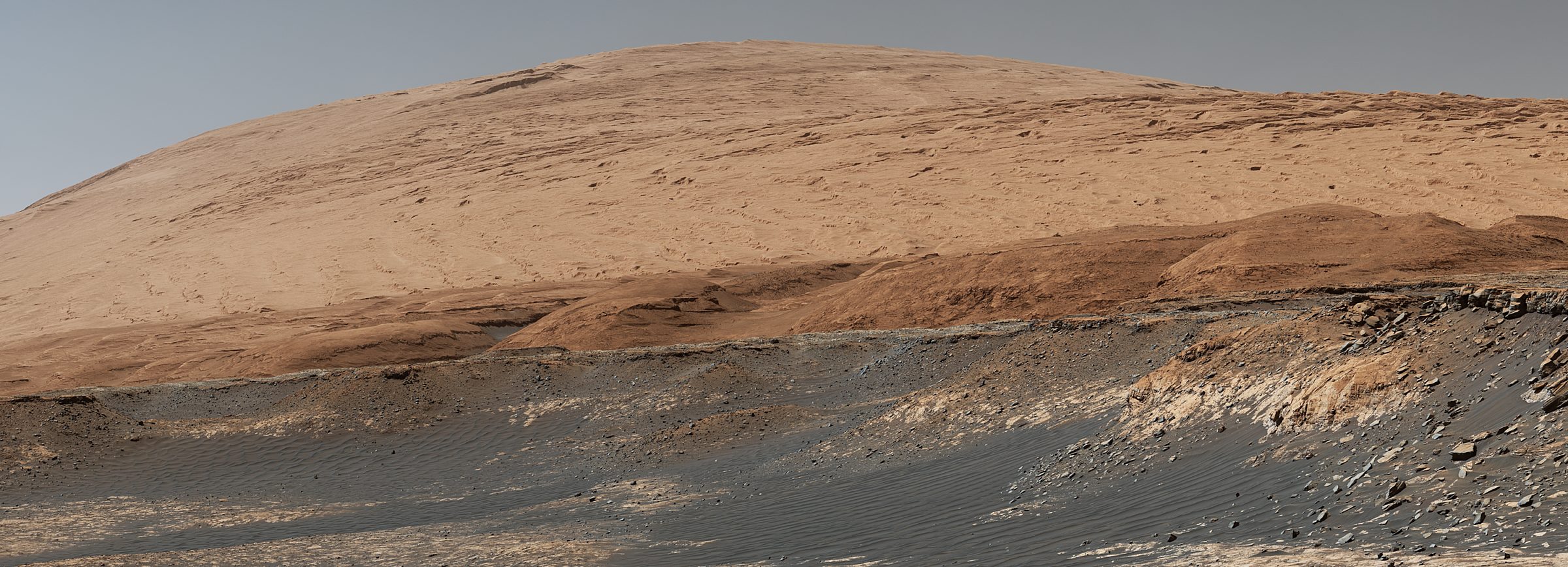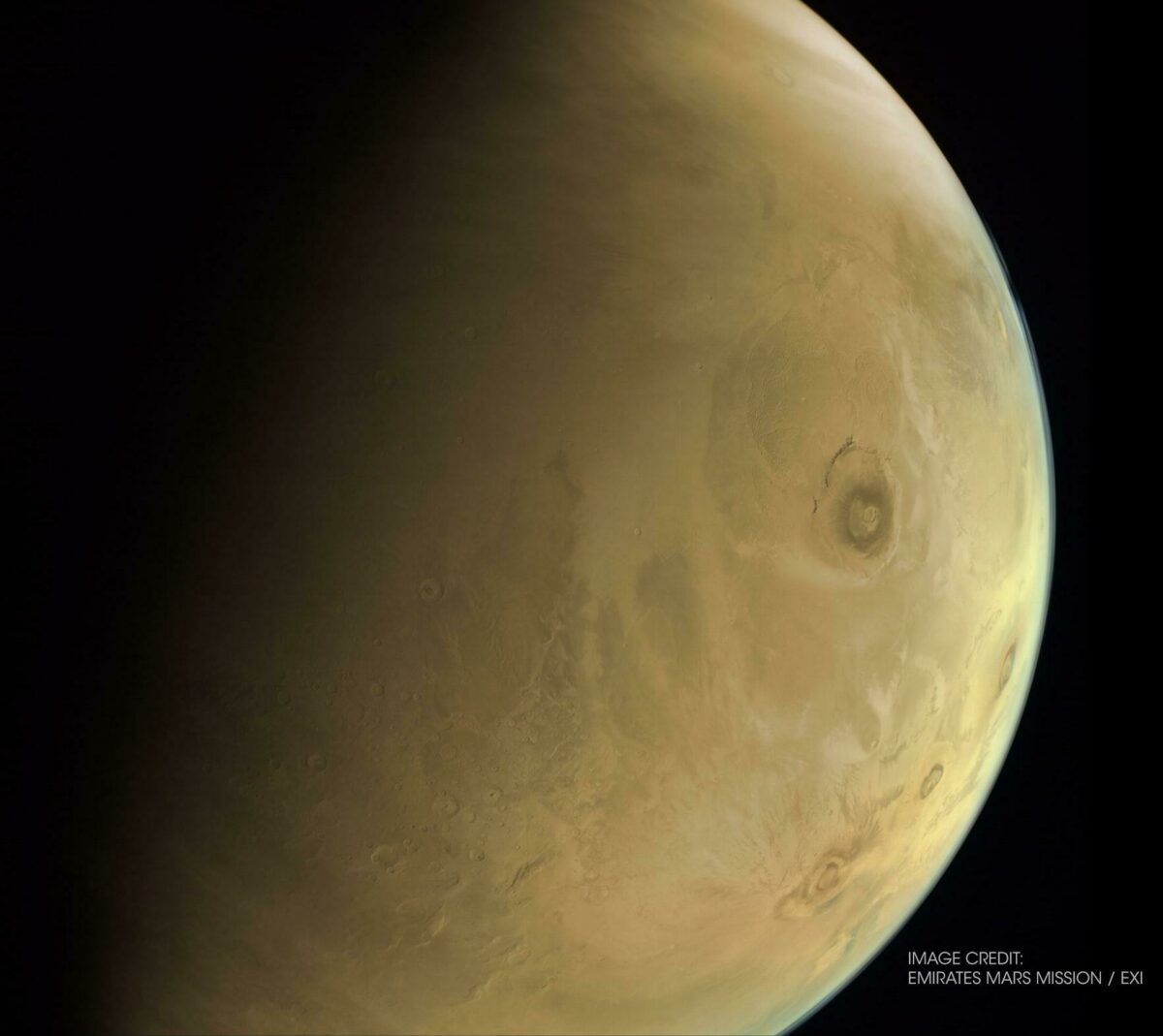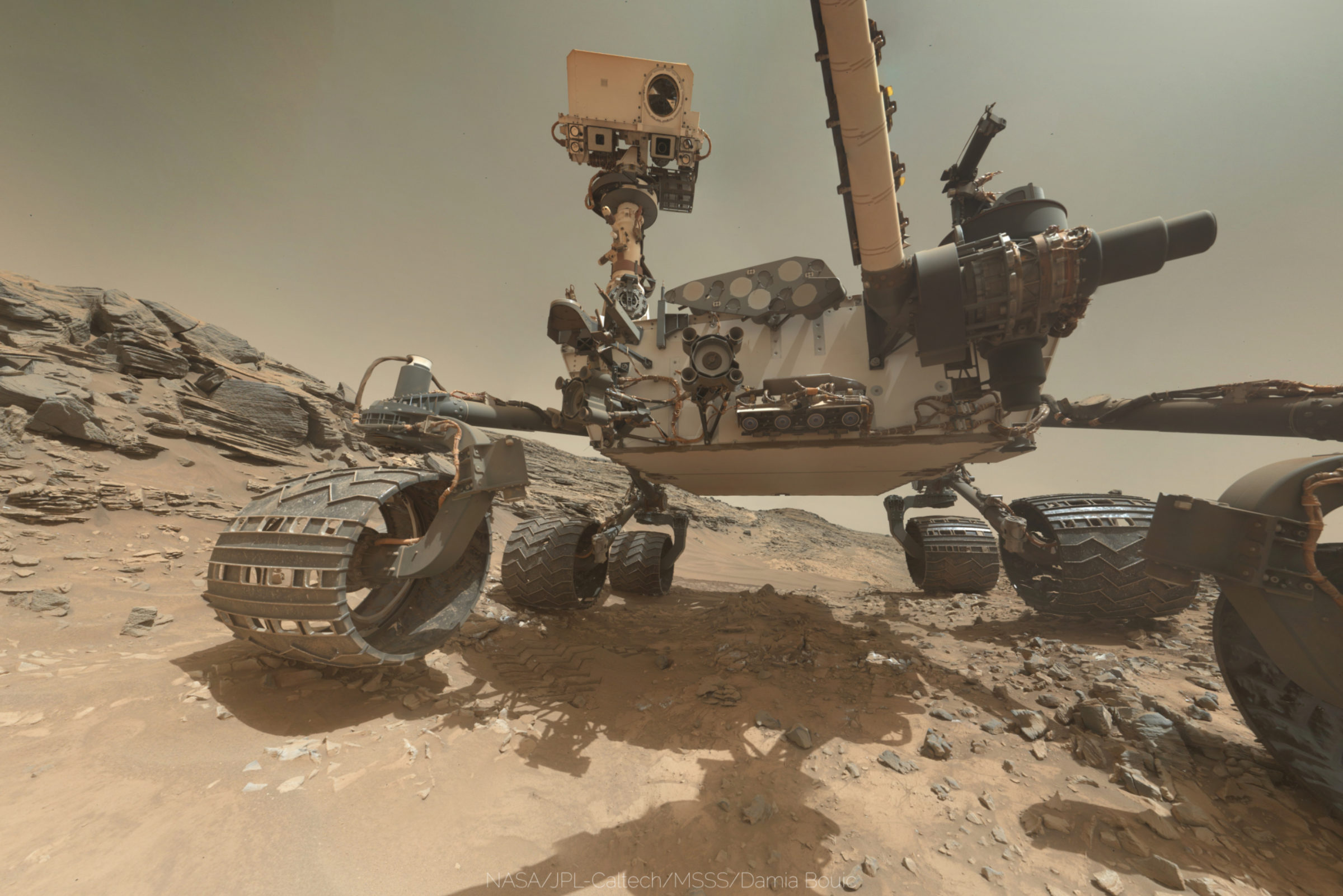Mars, the red planet
Highlights
- Mars once had liquid water on the surface and could have supported life.
- We don't know how Mars changed to the cold, dry desert world it is today.
- We explore Mars to understand the planet's history and look for evidence of past or even present life.
Mars facts
Surface temperature: -140°C (-284°F) to 30°C (86°F)
Average distance from Sun: 228 million kilometers (142 million miles), or 1.7 times farther from the Sun than Earth
Diameter: 6,792 kilometers (4,220 miles), Earth is 1.9 times wider
Volume: 163 billion km3 (39 billion mi3), Mars could fit inside Earth 6.1 times
Gravity: 3.7 m/s², or 37% that of Earth’s
Solar day: 25 Earth hours
Solar year: 687 Earth days
Atmosphere: 95% carbon dioxide, 3% nitrogen, 1.5% argon, 0.5% other gases
Why we study Mars
David Bowie wasn't the first person to ask "Is there life on Mars?" This question has intrigued humans for centuries. Early telescope observations in the 18th and 19th centuries seemed to show a planet not all that different from Earth, with ice caps, seasons, and features that were mistaken for seas and artificial canals. A few scientists even thought that Mars was inhabited by intelligent life.
We now know that Mars is very cold and dry, with no breathable atmosphere and no global magnetic field to protect it from the Sun's radiation. But it wasn't always that way. Space missions have shown us that Mars once had liquid water on the surface and could have been hospitable to life as we know it. Today, there may still be life beneath the surface, with access to water and protection from radiation and extreme temperatures.
We know Mars was habitable to life as we know it for at least some periods of time around 3 or 4 billion years ago. But we don't know whether the planet was warm and wet long enough for life to arise, or mostly cold and dry with only brief intervals that could have supported life.
How did Mars go from a potential life-supporting oasis to a cold, dry
desert? Does life still flourish underground? The answers to these
questions will teach us more about where we come from and whether we are alone in the cosmos.

Missions to Mars
Humans have sent more spacecraft to Mars than any other world beyond Earth. Today, there are eleven missions operating on or around the planet, shaping the next generation of exploration.
The United States and Soviet Union began sending robotic probes to Mars in the 1960s. Many of those early attempts failed, until NASA's Mariner 4 spacecraft successfully flew by Mars in 1965, revealing a barren landscape. Later missions saw Earth-like deltas and canyons suggesting that liquid water had shaped the surface.
The NASA Viking landers of the mid-1970s — the first to land on Mars successfully — tested the Martian soil to look for possible signs of life. The results showed no clear evidence for the presence of living microorganisms in the soil near the landing sites.
To determine whether or not life once existed on Mars — and possibly still exists underground today — NASA initiated the Mars Exploration Program in the mid-1990s to systematically explore the Red Planet. In 2000, the program adopted a goal to "follow the water." Because liquid water is essential to life on Earth, the search for life elsewhere starts by looking in places where this key ingredient exists or used to exist.
Orbital missions to Mars study the planet's atmosphere, map and identify major geologic features, and determine the composition of minerals and ice. Orbital missions are easier, technically speaking, than landing on the surface, and, as a consequence, more affordable. Orbital spacecraft can also serve as critical relay satellites for surface spacecraft and future human missions. Besides Earth, Mars is the only planet in the solar system with a global satellite communications system.
Although much can be learned about Mars from orbit, for detailed observations we must land on the surface. Initially, this involved stationary landers that could analyze one location. But on Earth, geologists travel widely to study the composition of different types of rock in order to reconstruct a complete picture of the planet's past. To do this on Mars, NASA has developed a series of spacecraft with wheels called rovers — Sojourner, Spirit and Opportunity, Curiosity, and Perseverance — which have proven to be highly effective in exploring the surface.
The next step in Mars exploration is returning surface samples back to Earth. Although rovers are highly capable mobile science labs, their tiny, low-power instruments can't compete with larger, heavier versions back on Earth. Bringing just a few small samples back to Earth will allow us to dramatically advance our understanding of Mars—including whether it may have supported life.
NASA's Perseverance rover began collecting soil and rock samples in 2021, storing them in small tubes, and depositing them on the surface for future return to Earth. Japan’s MMX mission will launch in 2024 to bring samples of Mars' moon Phobos, which are likely to contain diverse bits and pieces from across Mars thrown into orbit by meteorites.
Sending scientists directly to Mars remains the ultimate goal for Mars exploration. A human in a spacesuit would be able to move, collect samples, and make decisions much more quickly than a robot being controlled from Earth, where the average round-trip time to send and receive rover signals is 25 minutes. A first step in sending humans to Mars would be simply placing them in orbit, where they could control rovers on the surface in real-time.
Exploring Mars responsibly
If we send humans to the surface of Mars, we must do so responsibly. Throughout history, humans have devastated ecosystems in the act of exploration, both accidentally and intentionally. The National Academies of Sciences, Engineering, and Medicine laid the groundwork for planetary protection policies that balance responsibility with the desire to explore. The Planetary Society advocates for these recommendations and supports scientifically motivated guidelines for responsible planetary protection.


Action Center
Whether it's advocating, teaching, inspiring, or learning, you can do something for space, right now. Let's get to work.


 Explore Worlds
Explore Worlds Find Life
Find Life Defend Earth
Defend Earth


